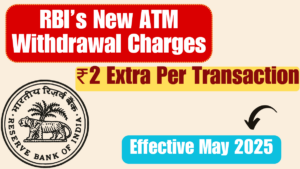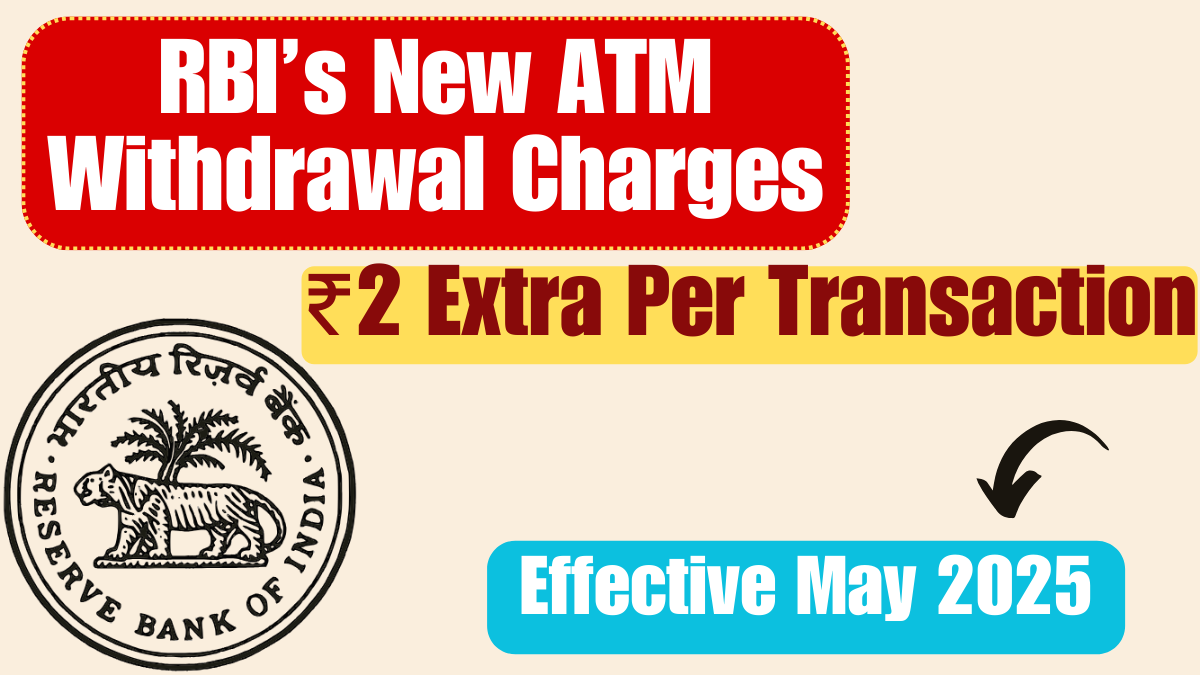If you frequently use ATMs for cash withdrawals or balance checks, the latest announcement from the Reserve Bank of India (RBI) might pinch your wallet. Starting May 1, 2025, the cost of ATM transactions is set to increase, following approval by RBI in collaboration with the National Payments Corporation of India (NPCI).
Let’s dive into what’s changing, how much more you’ll pay, and how you can avoid unnecessary charges.

What’s Changing from May 1, 2025?
Under the new rule, two major changes will impact customers:
-
ATM Withdrawal Charges
-
Earlier: ₹17 per transaction (post free limit)
-
Now: ₹19 per transaction (post free limit)
-
-
Balance Check & Mini Statement Charges
-
Earlier: ₹6
-
Now: ₹7
-
This new structure means users will now have to pay ₹2 extra per withdrawal and ₹1 extra per balance inquiry or mini statement after the set number of free transactions.
Why the Change?
The revision comes as part of a proposal by RBI and NPCI to address increased operational costs and infrastructure upgrades in ATM networks. With rising costs of ATM maintenance and cash handling, banks are passing on a part of that burden to customers.
Free Transaction Limits Per Month
RBI allows customers a certain number of free ATM transactions per month. Beyond this limit, the new charges will apply.
| ATM Type | Free Transactions Allowed |
|---|---|
| Own Bank ATM | 3 transactions/month |
| Other Bank ATM (Metro) | 3-5 transactions/month |
| Other Bank ATM (Non-Metro) | 5 transactions/month |
Note: The limit may vary depending on your bank’s policy, and includes both financial and non-financial transactions.
Who Will Be Affected?
This change will particularly affect:
-
Individuals relying on frequent cash withdrawals
-
Customers unaware of charges for balance checks
-
Those who exceed their free transaction limits
If you’re used to checking your balance regularly at an ATM, you may unknowingly incur these rising costs each month.
How to Avoid Extra Charges?
Here are a few smart tips to minimize ATM fees:
-
Use mobile banking apps to check balances instead of visiting ATMs.
-
Plan bulk cash withdrawals rather than multiple small transactions.
-
Prefer digital payments for purchases to reduce ATM dependency.
-
Track your monthly transaction count and stay within limits.
FAQs on RBI’s New ATM Rule 2025
When will the new ATM charges come into effect?
The revised charges will apply from May 1, 2025 onwards.
How many ATM withdrawals are free each month?
Typically, 3-5 transactions are free depending on whether you use your own bank’s ATM or another bank’s ATM.
Is checking balance at the ATM free?
Only up to a limited number of times each month. After that, you will be charged ₹7 per inquiry.
Who decided on these new charges?
The changes have been jointly decided by RBI and NPCI, considering operational costs and service improvements.
Will all banks follow the same fee structure?
Yes, most banks will follow RBI’s directive, though some may offer more free transactions for premium account holders.
Conclusion
With the new RBI ATM withdrawal rules effective from May 2025, it’s essential to be mindful of your ATM usage. The increased charges—₹19 for withdrawals and ₹7 for balance checks—may seem small, but they can add up over time.
Switching to digital banking, tracking your free limits, and consolidating cash withdrawals can help you stay within budget and avoid unnecessary charges. As India moves towards a less-cash economy, being financially aware is key to managing these regulatory changes smartly.
Click here to know more.
